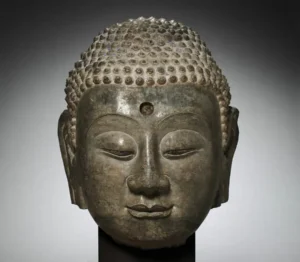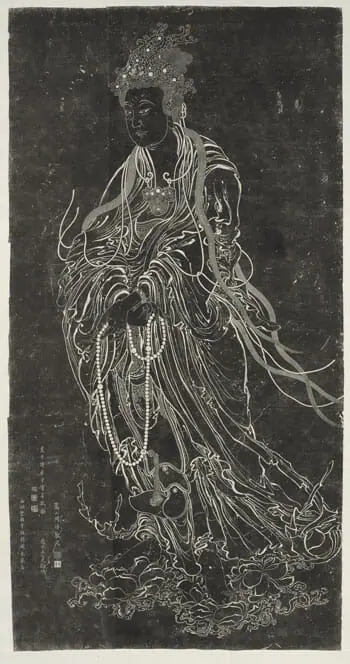
Founded in the sixth century BC in India, Buddhism remains an important spiritual practice in most countries in Asia today and is the world’s fourth largest religion.
The Buddha, Siddharta Gautama, lived at a time between 600–400 BC. Born into a royal family in northeast India, he was kept in luxury, hidden away from the realities of most people’s lives. When, as a young man, he first saw old age, disease and death, he was so affected that he decided to devote his life to understanding and putting an end to suffering.
He entered into the practice of the religions of his day (Vedic Hinduism and asceticism) but was unable to find the answers he sought. Eventually, he vowed to sit under a tree (the ficus religiosa, later known as the Bodhi tree) and meditate until he reached understanding. At the age of thirty five he attained enlightenment and thereafter took on the role of teacher, sharing his learning with others.
There are no direct writings of the Buddha, but the rules for monastic life and his teachings were passed down by oral tradition until they were written in scriptures in the second century BC (widely known as the Pali Canon).
From India, Buddhism spread in three main directions:
- South. Through Sri Lanka to south-east Asia (Myanmar, Thailand, Cambodia, Laos, etc.). This is the Theravada tradition, “The Way of the Elders”. It is the oldest strand of the tradition, based on the Pali Canon.
- East. Out of India via the Silk Route, over the deserts and Himalayas through Afghanistan into the far west of China. This strand of Buddhism then continued through China, further north to Vietnam and Korea and on to Japan, Manchuria, Tibet, etc. This is known as the Mahayana tradition.
- North. From India to Nepal and Tibet, this became known as the Tibetan Mahayana or Vajrayana (The Diamond Vehicle).
The first physical evidence of Buddhism in China dates to the Han dynasty (206-220 BC). According to legend, the Emperor Mingdi had a dream in which he saw a golden-bodied man flying over his palace. Consulting with his officials, he was informed that there was a man in India who had attained the Dao and was called Buddha. He was known to fly through the air and shine like the sun. The emperor immediately sent an envoy to India to bring back the Buddha’s teachings, the first translations of which appeared in 148 BC.
A number of Buddhist schools emerged in China. The most dominant, Chan Buddhism, is credited to the Indian monk Bodhidharma who lived in the sixth century BC, who travelled to China. Some say that he visited the Shaolin temple and was initially critical of the monks and their practices. He left them to meditate himself in a nearby cave where he remained for nine years but was subsequently asked back to the temple to act as a teacher. Others dispute the connection between Bodhidharma and martial arts1Meir Shahar, The Shaolin Monastery: History, Religion, and the Chinese Martial Arts. Honolulu: University of Hawaii Press, 2008. but this is not the place to dwell on that. However, it is right to say that he is certainly an important figure in the story of the spread of Buddhism.
When Buddhism arrived in China, Daoism and Confucianism were already well established. Despite arising from a different language, customs and culture, there were sufficient overlaps between the teachings that it was of immediate interest. These overlaps included the practice of meditation and the focus on compassion in the stories of the Bodhisattvas (particularly that of Guanyin).

Chan Buddhism, because of its contact with Daoism, developed a distinctive character. Many Westerners have never heard of Chan, but most of us are familiar with the name “Zen”. The American and European travellers to Japan in the 1950s and 1960s who brought back elements of Zen Buddhism, were in fact giving us our first contact with Chinese Buddhism, “Zen” being the Japanese pronunciation of “Chan”. The current interest in mindfulness in the West is a direct descendent of the traditions and practices of the different schools of Buddhism.
In the next series of articles in this Philosophy section, we will learn more about the key tenets of Buddhism.
